 Search by Keyword
Sign Up Below for our MONTHLY BEATLES TRIVIA QUIZ!
|
“THE FOOL ON THE HILL”
(John Lennon – Paul McCartney)
In 1965, Lennon broke the usual "love song" conformity of The Beatles catalog with his song “Nowhere Man.” The mysterious identity of this “man” was left unclear and open to interpretation, resulting in fans speculating whether the tune was written autobiographically, which he later said it was, at least in its original conception. Nevertheless, the song was written purposely leaving a vagueness hanging in the air, the obvious identity of this “nowhere man” nowhere to be found, which lends to its overall appeal.
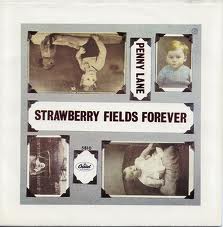 Paul, not being one to be outdone, borrowed John's general theme (if only subconsciously) to develop it in an altered but similarly nondescript way. Like he had done with “Penny Lane” after hearing John’s “Strawberry Fields Forever,” Paul’s spin adds a bit more detail but still leaves the listener a bit mystified as to the identity of “the fool.” And, in the process, composes what author John Robertson described in the 1994 book “The Complete Guide To The Music Of The Beatles” as “an instant standard” that has “a deliciously light and airy arrangement.” The overall idea may have been developed before by Lennon, but McCartney took it to new heights in the psychedelic glow of 1967’s "summer of love." Paul, not being one to be outdone, borrowed John's general theme (if only subconsciously) to develop it in an altered but similarly nondescript way. Like he had done with “Penny Lane” after hearing John’s “Strawberry Fields Forever,” Paul’s spin adds a bit more detail but still leaves the listener a bit mystified as to the identity of “the fool.” And, in the process, composes what author John Robertson described in the 1994 book “The Complete Guide To The Music Of The Beatles” as “an instant standard” that has “a deliciously light and airy arrangement.” The overall idea may have been developed before by Lennon, but McCartney took it to new heights in the psychedelic glow of 1967’s "summer of love."
 Paul's house at St. John's Wood, London
|
Songwriting History
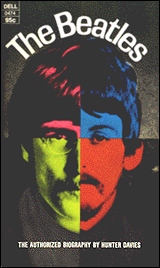 The first appearance of “The Fool On The Hill” in the group’s history was on March 29th, 1967. John was at Paul’s home in St. John’s Wood, London, to continue the composition of a new song for Ringo to sing on the “Sgt. Pepper” album, namely “With A Little Help From My Friends.” Beatles biographer Hunter Davies was present on this day and, as chronicled in his 1968 biography “The Beatles,” he witnessed the premier of another new song: The first appearance of “The Fool On The Hill” in the group’s history was on March 29th, 1967. John was at Paul’s home in St. John’s Wood, London, to continue the composition of a new song for Ringo to sing on the “Sgt. Pepper” album, namely “With A Little Help From My Friends.” Beatles biographer Hunter Davies was present on this day and, as chronicled in his 1968 biography “The Beatles,” he witnessed the premier of another new song:
 “Paul then went back to his guitar and started to sing and play a very slow, beautiful song about a foolish man sitting on the hill. John listened to it quietly, staring blankly out of the window, almost as if he weren’t listening. Paul sang it many times, la-la-ing words he hadn’t thought of yet. When at last he finished, John said he’d better write the words down or he’d forget them. Paul said it was okay. He wouldn’t forget them. It was the first time Paul had played it for John. There was no discussion. Then they lit a marijuana cigarette, sharing it between them.” “Paul then went back to his guitar and started to sing and play a very slow, beautiful song about a foolish man sitting on the hill. John listened to it quietly, staring blankly out of the window, almost as if he weren’t listening. Paul sang it many times, la-la-ing words he hadn’t thought of yet. When at last he finished, John said he’d better write the words down or he’d forget them. Paul said it was okay. He wouldn’t forget them. It was the first time Paul had played it for John. There was no discussion. Then they lit a marijuana cigarette, sharing it between them.”
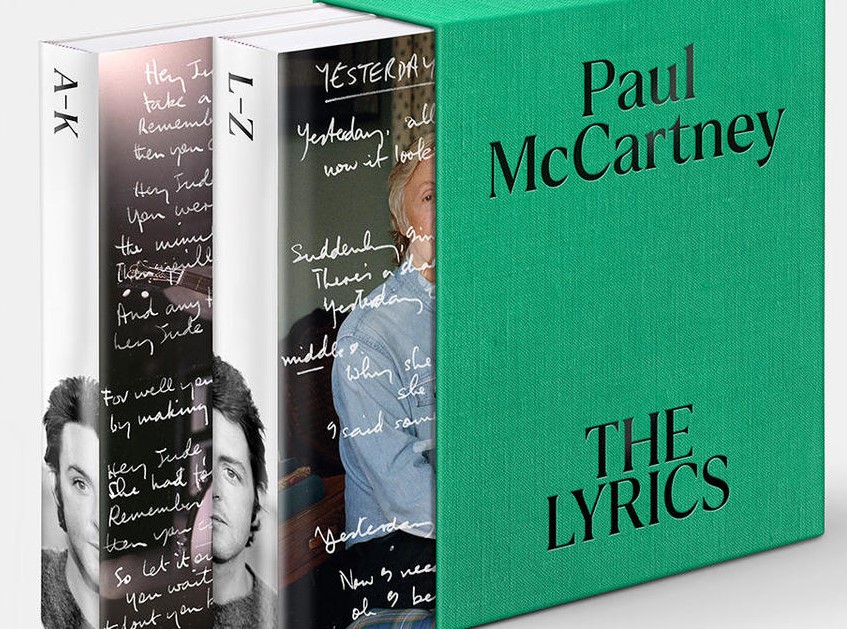 Just prior to this, probably only days before, Paul had composed what he played for John on this day as explained in his book “Many Years From Now.” "I was sitting at the piano at my father’s house in Liverpool hitting a D 6th chord and I made up ‘Fool On The Hill.’" In his 2021 book "The Lyrics," Paul elaborates: "I remember starting to work on it up in Heswall, on the Wirral peninsula, where my dad was living at the time. He had a piano in the house because he himself was a musician." Just prior to this, probably only days before, Paul had composed what he played for John on this day as explained in his book “Many Years From Now.” "I was sitting at the piano at my father’s house in Liverpool hitting a D 6th chord and I made up ‘Fool On The Hill.’" In his 2021 book "The Lyrics," Paul elaborates: "I remember starting to work on it up in Heswall, on the Wirral peninsula, where my dad was living at the time. He had a piano in the house because he himself was a musician."
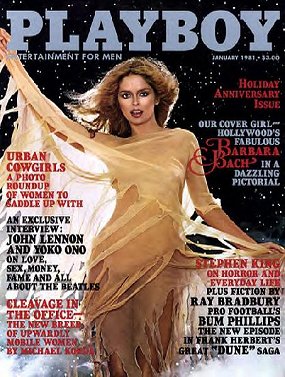 Even though the lyrics had not been completed by this time, it appears that John did not help Paul get the song to its finished state. When asked about “The Fool On The Hill” during his 1980 Playboy interview, John replied, “Paul again, proving that he can write lyrics if he’s a good boy.” Paul concurs, adding: “’Fool On The Hill’ was mine and I think I was writing about someone like Maharishi. His detractors called him a fool. Because of his giggle he wasn’t taken too seriously. It was this idea of a fool on the hill, a guru in a cave, I was attracted to. I remember once hearing about a hermit who missed the Second World War because he’d been in a cave in Italy, and that always appealed to me.” Even though the lyrics had not been completed by this time, it appears that John did not help Paul get the song to its finished state. When asked about “The Fool On The Hill” during his 1980 Playboy interview, John replied, “Paul again, proving that he can write lyrics if he’s a good boy.” Paul concurs, adding: “’Fool On The Hill’ was mine and I think I was writing about someone like Maharishi. His detractors called him a fool. Because of his giggle he wasn’t taken too seriously. It was this idea of a fool on the hill, a guru in a cave, I was attracted to. I remember once hearing about a hermit who missed the Second World War because he’d been in a cave in Italy, and that always appealed to me.”
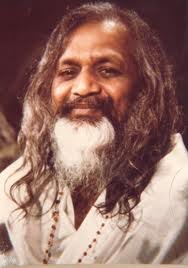 There were some good words in it, ‘perfectly still,’ I liked that, and the idea that everyone thinks he’s stupid appealed to me, because they still do. Saviors or gurus are generally spat upon, so I thought for my generation I’d suggest that they weren’t as stupid as they looked." The Beatles reportedly didn't meet the Maharishi Mahesh Yogi until July 24th, 1967, after his lecture in London on this date, but since Paul had already begun writing the lyrics to "The Fool On The Hill" as of the end of March of that year, it can be assumed that he had already become familiar with him via news reports or through hearsay. There were some good words in it, ‘perfectly still,’ I liked that, and the idea that everyone thinks he’s stupid appealed to me, because they still do. Saviors or gurus are generally spat upon, so I thought for my generation I’d suggest that they weren’t as stupid as they looked." The Beatles reportedly didn't meet the Maharishi Mahesh Yogi until July 24th, 1967, after his lecture in London on this date, but since Paul had already begun writing the lyrics to "The Fool On The Hill" as of the end of March of that year, it can be assumed that he had already become familiar with him via news reports or through hearsay.
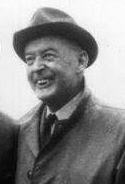 In his book "The Lyrics," Paul connects his relationship with his father Jim McCartney to the eventual writing of the song. "He was so proud of me. He was tickled by the fact that his son was recognized. We'd go into a restaurant, and we'd be sitting there or in a bar, and he'd be looking around at all the people. He'd spot someone who had recognized me, and he'd go, 'They've got you, they've got you.' In a strange way, it's precisely because people had 'got' us, that we were no longer able to be quite ourselves, which then left The Beatles so open to the possibilities the Maharishi offered. We needed to recenter ourselves. To get back to basics. We were introduced to the Maharishi in 1967 by George Harrison, who had gone to see him talk at the Hilton on Park Lane in London. Shortly after, we all went to study with him in Bangor in Waltes. Then, in early 1968, we went to Rishikesh, in India, for what was meant to be an extended period...The Maharishi had made a mark on all of us." In his book "The Lyrics," Paul connects his relationship with his father Jim McCartney to the eventual writing of the song. "He was so proud of me. He was tickled by the fact that his son was recognized. We'd go into a restaurant, and we'd be sitting there or in a bar, and he'd be looking around at all the people. He'd spot someone who had recognized me, and he'd go, 'They've got you, they've got you.' In a strange way, it's precisely because people had 'got' us, that we were no longer able to be quite ourselves, which then left The Beatles so open to the possibilities the Maharishi offered. We needed to recenter ourselves. To get back to basics. We were introduced to the Maharishi in 1967 by George Harrison, who had gone to see him talk at the Hilton on Park Lane in London. Shortly after, we all went to study with him in Bangor in Waltes. Then, in early 1968, we went to Rishikesh, in India, for what was meant to be an extended period...The Maharishi had made a mark on all of us."
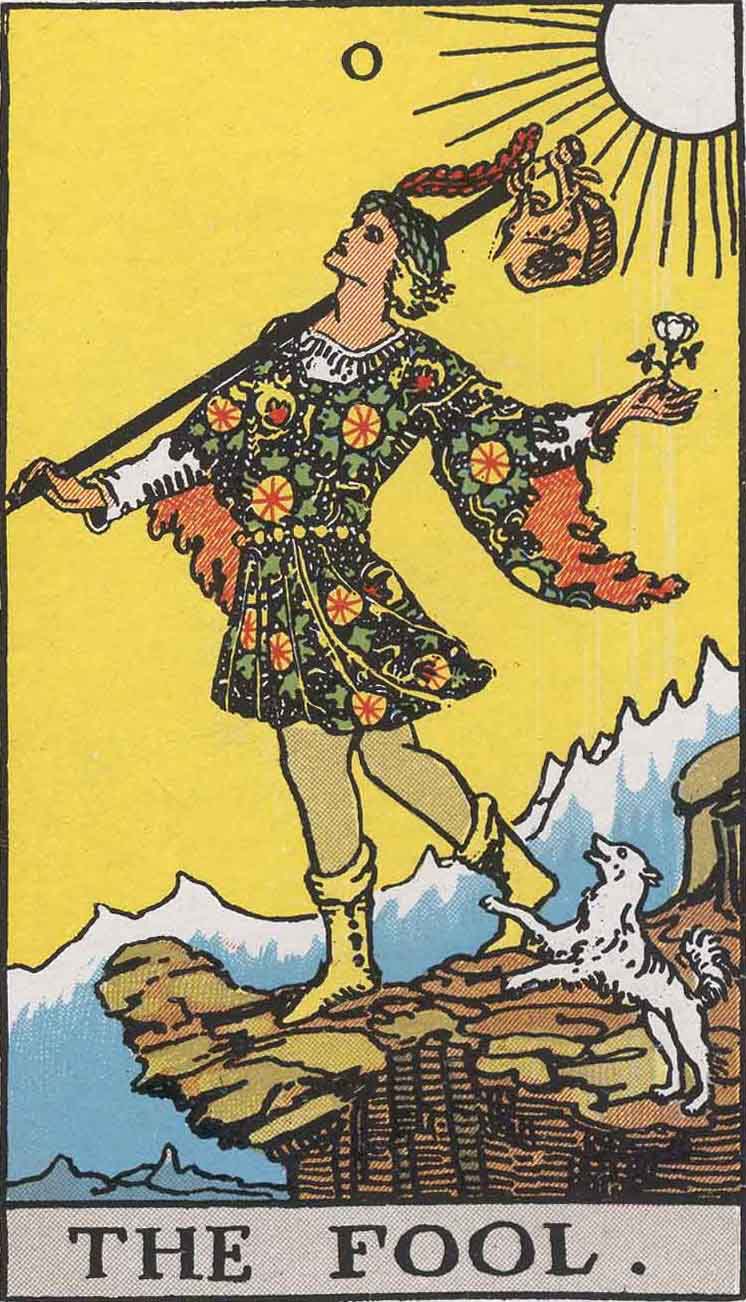 "I know some people think that my description of the Maharishi as a 'fool' is disparaging. That's not the case at all. I often get 'The Fool' card during a tarot reading, for example. Maybe it's from my tendency to try and see the positive side of things, or keeping an eye out for new ideas and adventures. In the song, I'm simply describing how the Maharishi was perceived by so many people - as the 'giggling guru.' That was not my own perception. I'm fascinated by how much trouble people have in recognizing irony. So, all in all, I think 'The Fool On The Hill' is a very complimentary portrait and represents the Maharishi as having the capacity to keep 'perfectly still' in the midst of the hurly-burly. He's admirably self-contained and doesn't pay much attention to popular opinion. He's a person who is open to ridicule because of his beliefs, but his beliefs may well be right. I think he may be related somehow to the truth-telling Fool in 'King Lear.'" "I know some people think that my description of the Maharishi as a 'fool' is disparaging. That's not the case at all. I often get 'The Fool' card during a tarot reading, for example. Maybe it's from my tendency to try and see the positive side of things, or keeping an eye out for new ideas and adventures. In the song, I'm simply describing how the Maharishi was perceived by so many people - as the 'giggling guru.' That was not my own perception. I'm fascinated by how much trouble people have in recognizing irony. So, all in all, I think 'The Fool On The Hill' is a very complimentary portrait and represents the Maharishi as having the capacity to keep 'perfectly still' in the midst of the hurly-burly. He's admirably self-contained and doesn't pay much attention to popular opinion. He's a person who is open to ridicule because of his beliefs, but his beliefs may well be right. I think he may be related somehow to the truth-telling Fool in 'King Lear.'"
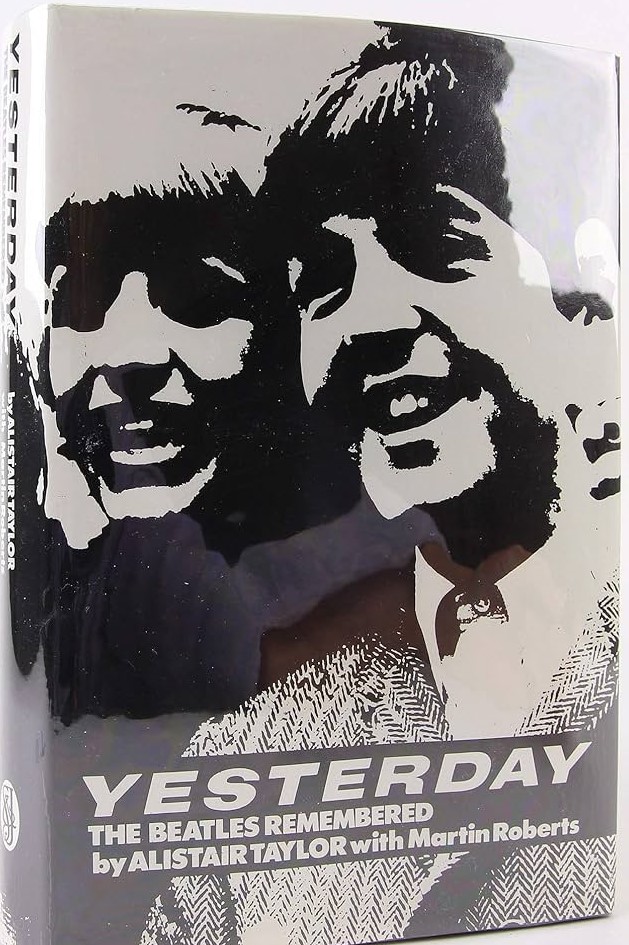 There is an event, as related in Alistair Taylor’s book “Yesterday,” that many authors have assumed to be the inspiration for “The Fool On The Hill.” Alistair Taylor writes about a time when he and Paul went for an early morning walk with Paul’s dog on Primrose Hill, London, only to mysteriously come across a man who seemed to have appeared out of nowhere, exchanged pleasantries with them, and then appeared to have vanished from their sight moments later. Alistair Taylor and Paul had just been discussing the existence of God previous to this man’s appearance, so this event shook them. Alistair Taylor relates: “Paul and I both felt the same weird sensation that something special had happened. We sat down rather shakily…and Paul said, ‘What the hell do you make of that? That’s weird. He was here wasn’t he? We did speak to him?’” There is an event, as related in Alistair Taylor’s book “Yesterday,” that many authors have assumed to be the inspiration for “The Fool On The Hill.” Alistair Taylor writes about a time when he and Paul went for an early morning walk with Paul’s dog on Primrose Hill, London, only to mysteriously come across a man who seemed to have appeared out of nowhere, exchanged pleasantries with them, and then appeared to have vanished from their sight moments later. Alistair Taylor and Paul had just been discussing the existence of God previous to this man’s appearance, so this event shook them. Alistair Taylor relates: “Paul and I both felt the same weird sensation that something special had happened. We sat down rather shakily…and Paul said, ‘What the hell do you make of that? That’s weird. He was here wasn’t he? We did speak to him?’”
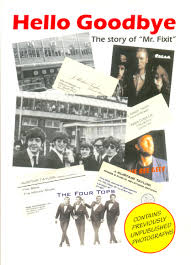 Speculation abounded through the years and this occurrence was rumored to be the inspiration for “The Fool On The Hill,” even though Alistair never hinted that was the case. To help put the matter to rest, George Gunby’s book “Hello Goodbye – The Life And Times Of Alistair ‘Mr. Fixit’ Taylor,” which was written with Alistair Taylor’s assistance, explains this event as happening somewhere around September of 1968. “It has been said that Paul McCartney wrote ‘Fool On The Hill’ about that dawn on Primrose Hill,” Gunby writes, “but the song predates the event.” Speculation abounded through the years and this occurrence was rumored to be the inspiration for “The Fool On The Hill,” even though Alistair never hinted that was the case. To help put the matter to rest, George Gunby’s book “Hello Goodbye – The Life And Times Of Alistair ‘Mr. Fixit’ Taylor,” which was written with Alistair Taylor’s assistance, explains this event as happening somewhere around September of 1968. “It has been said that Paul McCartney wrote ‘Fool On The Hill’ about that dawn on Primrose Hill,” Gunby writes, “but the song predates the event.”
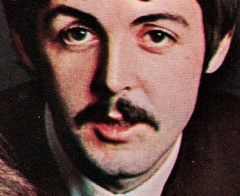 On Paul’s return flight from America on April 11th, 1967, which was the trip in which he came up with the original concept of a film project called “Magical Mystery Tour,” he had the foresight to include this yet-to-be-completed song. His original notes for the project, drawn out as a pie chart, shows the second piece of the “pie” with the words, “Coach people meet each other / (Song, Fool On The Hill?).” And although John Lennon apparently wasn’t involved in writing the song, Paul had all the missing “la-la-ing” lyrics figured out by the time he recorded a demo of the song on September 6th, 1967, only a word or two being altered in the final version that was officially recorded. On Paul’s return flight from America on April 11th, 1967, which was the trip in which he came up with the original concept of a film project called “Magical Mystery Tour,” he had the foresight to include this yet-to-be-completed song. His original notes for the project, drawn out as a pie chart, shows the second piece of the “pie” with the words, “Coach people meet each other / (Song, Fool On The Hill?).” And although John Lennon apparently wasn’t involved in writing the song, Paul had all the missing “la-la-ing” lyrics figured out by the time he recorded a demo of the song on September 6th, 1967, only a word or two being altered in the final version that was officially recorded.
Recording History
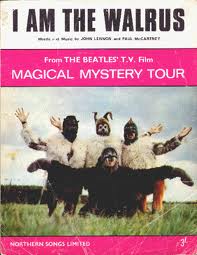 The first recording session that featured the song was, as mentioned above, the demo Paul made on September 6th, 1967. This session began at 7 pm (or thereabouts) in EMI Studio Two, the first and most important point of business on this day being extensive work on John’s excellent song “I Am The Walrus,” which began its life the day before. Also begun at this session was George’s contribution to the “Magical Mystery Tour” project, “Blue Jay Way.” By about 2 am the next morning, apparently after the other Beatles left for the night, Paul wanted to get something down on tape in regard to his five-and-a-half month old composition “The Fool On The Hill.” The first recording session that featured the song was, as mentioned above, the demo Paul made on September 6th, 1967. This session began at 7 pm (or thereabouts) in EMI Studio Two, the first and most important point of business on this day being extensive work on John’s excellent song “I Am The Walrus,” which began its life the day before. Also begun at this session was George’s contribution to the “Magical Mystery Tour” project, “Blue Jay Way.” By about 2 am the next morning, apparently after the other Beatles left for the night, Paul wanted to get something down on tape in regard to his five-and-a-half month old composition “The Fool On The Hill.”
 Engineer Geoff Emerick, in his book “Here, There And Everywhere,” remembered some details about the demo recorded that morning: “During the second night that we were working on ‘I Am The Walrus,’ Paul asked me to stay late so I could record him doing a simple piano / vocal demo of a new song that he had written. When he finished, he asked me what I thought, and I gave him a thumbs-up from the control room window. ‘That sounds like the start of a really good song,’ I stated. ‘What is it called?’ ‘It’s my newest one for the film, it’s called “The Fool On The Hill,”’ McCartney replied proudly. I turned to Ken (Scott), who was assisting. ‘Just my luck,’ I told him. ‘Paul brings in a beautiful song like that and you'll get to make the record of it, not me.’ Knowing that The Beatles were still hard at work at Abbey Road, I did not really want to go on vacation, but the EMI brass insisted that I had to take the time off because it had been scheduled so far in advance. George Martin also encouraged me to go, because he knew how burned out I was.” Engineer Geoff Emerick, in his book “Here, There And Everywhere,” remembered some details about the demo recorded that morning: “During the second night that we were working on ‘I Am The Walrus,’ Paul asked me to stay late so I could record him doing a simple piano / vocal demo of a new song that he had written. When he finished, he asked me what I thought, and I gave him a thumbs-up from the control room window. ‘That sounds like the start of a really good song,’ I stated. ‘What is it called?’ ‘It’s my newest one for the film, it’s called “The Fool On The Hill,”’ McCartney replied proudly. I turned to Ken (Scott), who was assisting. ‘Just my luck,’ I told him. ‘Paul brings in a beautiful song like that and you'll get to make the record of it, not me.’ Knowing that The Beatles were still hard at work at Abbey Road, I did not really want to go on vacation, but the EMI brass insisted that I had to take the time off because it had been scheduled so far in advance. George Martin also encouraged me to go, because he knew how burned out I was.”
The session was finally over at 3 am after this demo was made, it being released for all to hear in 1996 on the compilation “Anthology 2.” As work continued on other Beatles songs, as well as filming for the movie, they didn’t actually begin work on “The Fool On The Hill” until nearly three weeks later.
 That session was on September 25th, 1967, The Beatles all entering EMI Studio Two around 7 pm to begin proper recording of “The Fool On The Hill.” Three takes of a rhythm track were recorded, numbered one through three (ignoring McCartney's demo of three weeks prior that was documented as "take one") and featured Paul on piano and John on acoustic guitar. No vocals were recorded during these takes of the rhythm track, "take three" being deemed as best and ready for overdubs. Paul’s two-measure piano introduction, as heard repeated twice at the beginning of his demo version, was still in place, and the length of the song was 3:50 for now. That session was on September 25th, 1967, The Beatles all entering EMI Studio Two around 7 pm to begin proper recording of “The Fool On The Hill.” Three takes of a rhythm track were recorded, numbered one through three (ignoring McCartney's demo of three weeks prior that was documented as "take one") and featured Paul on piano and John on acoustic guitar. No vocals were recorded during these takes of the rhythm track, "take three" being deemed as best and ready for overdubs. Paul’s two-measure piano introduction, as heard repeated twice at the beginning of his demo version, was still in place, and the length of the song was 3:50 for now.
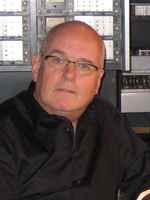 A tape reduction was created of "take three" for opening up more tracks for overdubbing, this reduction bringing the current best to "take four." Three overdubs were made at this session, one being Paul on recorder, then Ringo on drums, and then finally Paul’s first attempt at lead vocals. Although the lyrics were basically finished by this time, Paul still hadn’t settled on what the actual phrasing would be. One example is the line “The man with the empty mind is talking perfectly loud,” which was recorded on this day. After these overdubs were complete, a preliminary mono mix was created by George Martin and engineers Ken Scott and Richard Lush, this being done for acetate cutting purposes only. By 3 am the following morning, the session was finally over. This version of “The Fool On The Hill” was included on the album “Anthology 2.” A tape reduction was created of "take three" for opening up more tracks for overdubbing, this reduction bringing the current best to "take four." Three overdubs were made at this session, one being Paul on recorder, then Ringo on drums, and then finally Paul’s first attempt at lead vocals. Although the lyrics were basically finished by this time, Paul still hadn’t settled on what the actual phrasing would be. One example is the line “The man with the empty mind is talking perfectly loud,” which was recorded on this day. After these overdubs were complete, a preliminary mono mix was created by George Martin and engineers Ken Scott and Richard Lush, this being done for acetate cutting purposes only. By 3 am the following morning, the session was finally over. This version of “The Fool On The Hill” was included on the album “Anthology 2.”
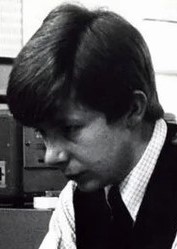 Later that same day, September 26th, 1967, The Beatles reconvened in EMI Studio Two to start "The Fool On The Hill" from scratch, this decision undoubtedly being made after Paul reviewed the acetate disc made at the previous session. This session, however, took place without either Geoff Emerick or George Martin in the control room. As the book “The Beatles Recording Sessions” explained it: “Ken Scott took charge of the studio control room for this session – even though it was only his second day as Beatles balance engineer. He was, understandably, a little flustered, as Richard Lush recalls. ‘He was so nervous that it was just unbelievable. He was saying “What lights do I use?” and “What do I do?” I really felt for him that day. The Beatles always put a bit of pressure on their engineers; they expected you to be there doing your job but there wasn’t a lot of thanks.” Later that same day, September 26th, 1967, The Beatles reconvened in EMI Studio Two to start "The Fool On The Hill" from scratch, this decision undoubtedly being made after Paul reviewed the acetate disc made at the previous session. This session, however, took place without either Geoff Emerick or George Martin in the control room. As the book “The Beatles Recording Sessions” explained it: “Ken Scott took charge of the studio control room for this session – even though it was only his second day as Beatles balance engineer. He was, understandably, a little flustered, as Richard Lush recalls. ‘He was so nervous that it was just unbelievable. He was saying “What lights do I use?” and “What do I do?” I really felt for him that day. The Beatles always put a bit of pressure on their engineers; they expected you to be there doing your job but there wasn’t a lot of thanks.”
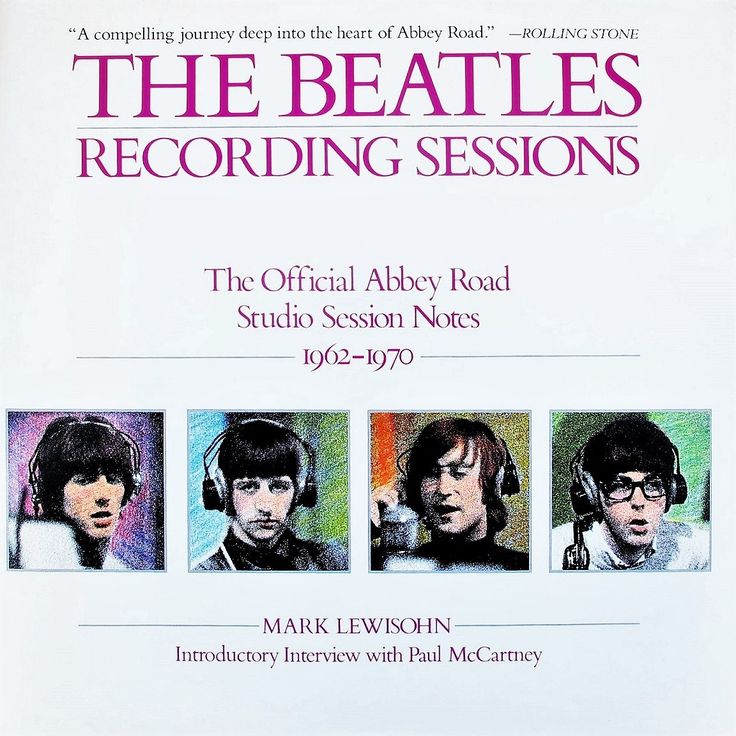 The session once again began sometime after 7 pm. Starting fresh on "take five" of the song, track one of the four-track tape contained McCartney on piano, track two featuring Harrison on acoustic guitar, Paul playing additional high notes on "jangle box" piano, Lennon on celeste and Ringo on maracas and finger cymbals treated with tape delay, track three having George on another acoustic guitar, Paul on recorder and Ringo on drums, and track four having another recorder played by Paul. As we see here, George doubled up the finger-picked guitar phrases found in the lyrical gaps of verse two. “It was almost a ‘re-make,” stated Mark Lewisohn in his book "The Beatles Recording Sessions," although a case in point is that this was actually a total remake of the song. The time length of "The Fool Of The Hill" at this point was at 4:38. The session once again began sometime after 7 pm. Starting fresh on "take five" of the song, track one of the four-track tape contained McCartney on piano, track two featuring Harrison on acoustic guitar, Paul playing additional high notes on "jangle box" piano, Lennon on celeste and Ringo on maracas and finger cymbals treated with tape delay, track three having George on another acoustic guitar, Paul on recorder and Ringo on drums, and track four having another recorder played by Paul. As we see here, George doubled up the finger-picked guitar phrases found in the lyrical gaps of verse two. “It was almost a ‘re-make,” stated Mark Lewisohn in his book "The Beatles Recording Sessions," although a case in point is that this was actually a total remake of the song. The time length of "The Fool Of The Hill" at this point was at 4:38.
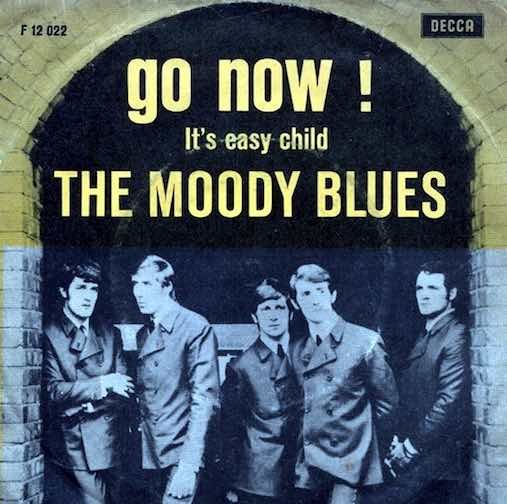 Another reduction mix was then created, all of the above elements now being combined onto one track of a new four-track tape. With three open tracks now available, an interesting overdub took place at this time. "We were very friendly at the time with The Beatles," stated Ray Thomas of The Moody Blues in a 2015 interview with Stephen Schnee. "Anyway, Mike (Pinder, also of The Moody Blues) and I went into Abbey Road," Ray Thomas continued, "and we played on 'I Am The Walrus' and 'Fool On The Hill.' And it was my idea to put all those harmonicas on. There was George and John, me and Mike (Pinder) around the microphone. Paul was up in the control room at the desk and we put these harmonicas down." Another reduction mix was then created, all of the above elements now being combined onto one track of a new four-track tape. With three open tracks now available, an interesting overdub took place at this time. "We were very friendly at the time with The Beatles," stated Ray Thomas of The Moody Blues in a 2015 interview with Stephen Schnee. "Anyway, Mike (Pinder, also of The Moody Blues) and I went into Abbey Road," Ray Thomas continued, "and we played on 'I Am The Walrus' and 'Fool On The Hill.' And it was my idea to put all those harmonicas on. There was George and John, me and Mike (Pinder) around the microphone. Paul was up in the control room at the desk and we put these harmonicas down."
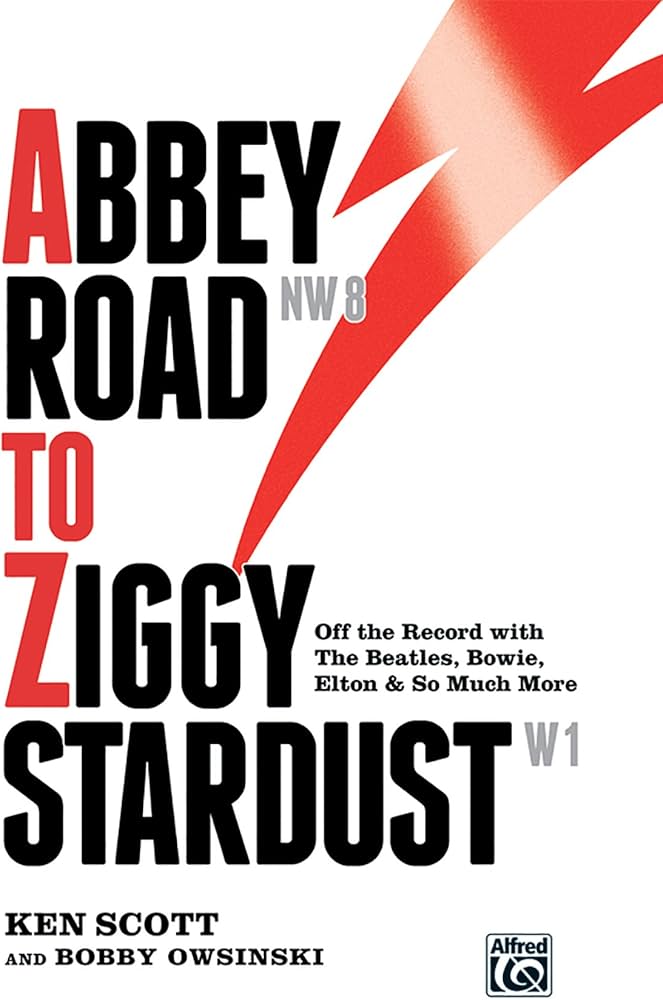 "We were recording the harmonicas for 'Fool On The Hill' and the band had sent out for food," states Ken Scott in his 2012 book "Abbey Road To Ziggy Stardust." This young inexperienced engineer continues: "When it finally arrived, they all just sat down in the studio eating by themselves and never offered myself or second engineer Richard Lush anything, and I was starving. Richard (Lush) had already gone through all of this...so he knew what they were like during this period. I turned around to him and asked, 'What the hell do we do?' Richard calmly replied, 'It's easy. We get up and we go!' and leans over and pushes the talkback button and says, 'OK, guys. We'll be back in an hour. We're just going to get something to eat. OK?' The band waved and cheerfully replied, 'Yeah, OK.' I was petrified because I'd never had to do that before and didn't quite yet know that it was perfectly fine to actually take a break from working with the greatest band in the world. But it was that easy; you just walk out on them." "We were recording the harmonicas for 'Fool On The Hill' and the band had sent out for food," states Ken Scott in his 2012 book "Abbey Road To Ziggy Stardust." This young inexperienced engineer continues: "When it finally arrived, they all just sat down in the studio eating by themselves and never offered myself or second engineer Richard Lush anything, and I was starving. Richard (Lush) had already gone through all of this...so he knew what they were like during this period. I turned around to him and asked, 'What the hell do we do?' Richard calmly replied, 'It's easy. We get up and we go!' and leans over and pushes the talkback button and says, 'OK, guys. We'll be back in an hour. We're just going to get something to eat. OK?' The band waved and cheerfully replied, 'Yeah, OK.' I was petrified because I'd never had to do that before and didn't quite yet know that it was perfectly fine to actually take a break from working with the greatest band in the world. But it was that easy; you just walk out on them."
 After the harmonicas were recorded, McCartney added two vocals, an added recorder, and a "flock of seagulls" type sound effect at about the 2:40 mark in the song, this being created "by a tape being rewould across the replay head," as explained by writer Kevin Howlett in the liner notes of the "Anthology 4" album. This being accomplished, the session was complete by 4:15 am the next morning. After the harmonicas were recorded, McCartney added two vocals, an added recorder, and a "flock of seagulls" type sound effect at about the 2:40 mark in the song, this being created "by a tape being rewould across the replay head," as explained by writer Kevin Howlett in the liner notes of the "Anthology 4" album. This being accomplished, the session was complete by 4:15 am the next morning.
 The Beatles were back at work later that day, September 27th, 1967, for two recording sessions. The first, from 2:30 to 5:30 pm, was concentrated solely on John’s masterpiece “I Am The Walrus,” while the second session, in EMI Studio Two starting approximately at 7 pm, continued extensive work on “Walrus” for around seven hours, attention eventually turning back to “The Fool On The Hill” around 2:30 am the next morning. This simple overdub consisted of Paul laying down another vocal track on the song. Thinking it was done, the returning George Martin, along with Ken Scott and Richard Lush, gave it a quick mono mix (mix 2) to end the session by 3:30 am that morning. The Beatles were back at work later that day, September 27th, 1967, for two recording sessions. The first, from 2:30 to 5:30 pm, was concentrated solely on John’s masterpiece “I Am The Walrus,” while the second session, in EMI Studio Two starting approximately at 7 pm, continued extensive work on “Walrus” for around seven hours, attention eventually turning back to “The Fool On The Hill” around 2:30 am the next morning. This simple overdub consisted of Paul laying down another vocal track on the song. Thinking it was done, the returning George Martin, along with Ken Scott and Richard Lush, gave it a quick mono mix (mix 2) to end the session by 3:30 am that morning.
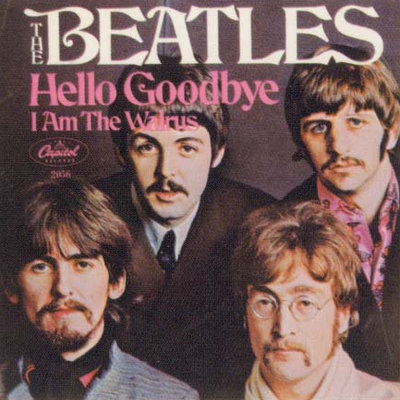 Just over three weeks later, however, this mono mix was deemed unusable because it was decided to add one final overdub for completing “The Fool On The Hill.” This occurred on October 20th, 1967 in EMI Studio Three, the session once again documented to have begun at 7 pm. Paul's recorder performances on September 26th, 1967 were apparently considered as inadequate so it was decided to enhance it with three flautists, their session being booked between 8 and 11 pm on this day. With this overdub complete, attention was then turned to a viola overdub for the already started “Hello Goodbye,” which took the session to 3:45 am the next morning. Although no Beatle played anything during this session, all of them were present. "Paul McCartney was doodling at the piano and George Martin was sitting next to him writing down what he was playing," remembered session viola player Leo Birnbaum. His fellow studio musician Ken Essex added: “One of them was sitting on the floor in what looked like a pajama suit, drawing with crayons on a piece of paper.” Just over three weeks later, however, this mono mix was deemed unusable because it was decided to add one final overdub for completing “The Fool On The Hill.” This occurred on October 20th, 1967 in EMI Studio Three, the session once again documented to have begun at 7 pm. Paul's recorder performances on September 26th, 1967 were apparently considered as inadequate so it was decided to enhance it with three flautists, their session being booked between 8 and 11 pm on this day. With this overdub complete, attention was then turned to a viola overdub for the already started “Hello Goodbye,” which took the session to 3:45 am the next morning. Although no Beatle played anything during this session, all of them were present. "Paul McCartney was doodling at the piano and George Martin was sitting next to him writing down what he was playing," remembered session viola player Leo Birnbaum. His fellow studio musician Ken Essex added: “One of them was sitting on the floor in what looked like a pajama suit, drawing with crayons on a piece of paper.”
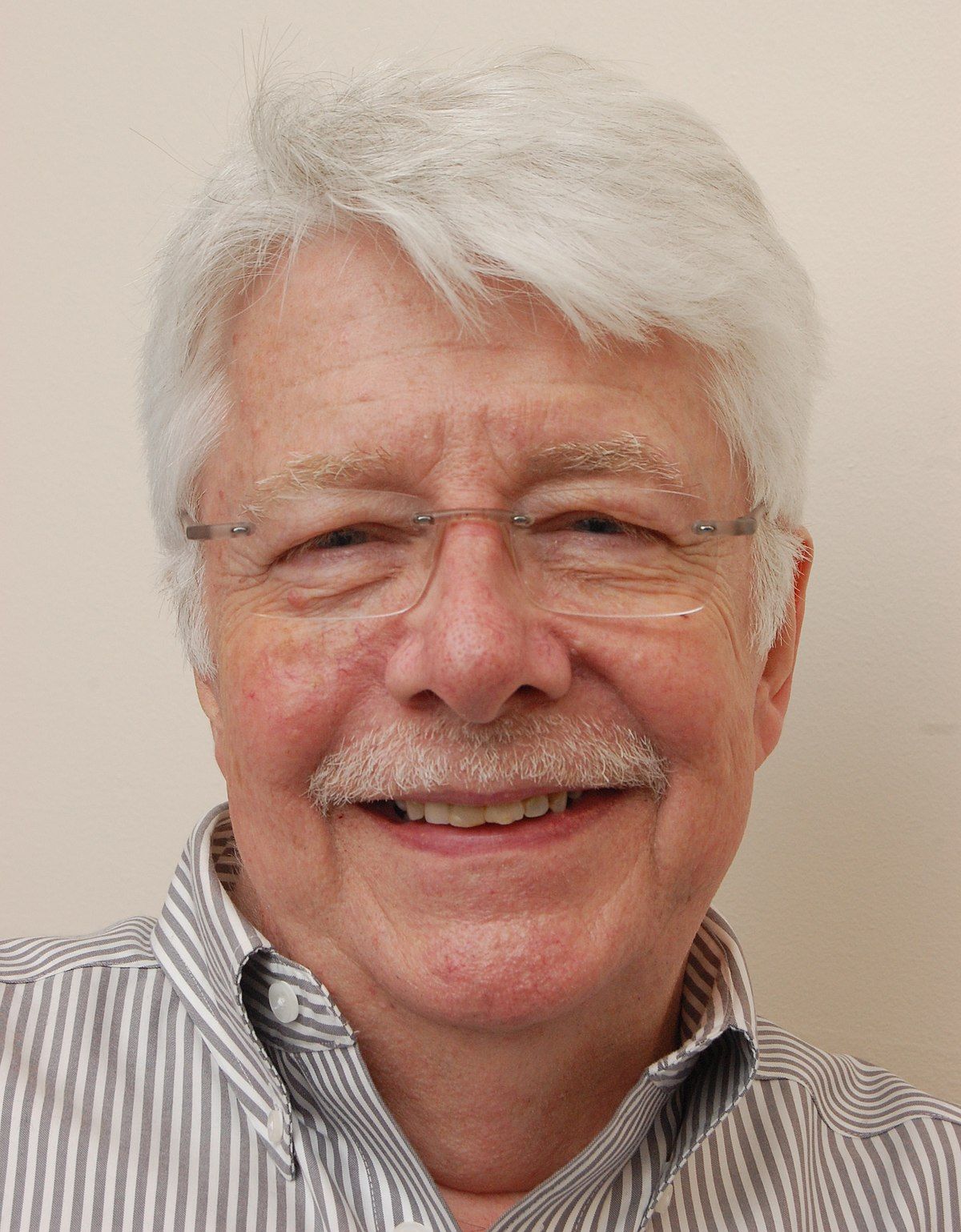 The released mono mix of “The Fool On The Hill” was made on October 25th, 1967 in the EMI Studio Three control room by the team of George Martin, Ken Scott and 2nd engineer Graham Kirkby. Three attempts were made from "take six," remixes 10 through 12, with ‘remix 12’ being deemed as best. Since they desired to reduce the length of the song from 4:38 to something that resolved more suitably, an edit was made on this day to reduce the song to exactly three minutes, the standard limit for radio airplay. The released mono mix of “The Fool On The Hill” was made on October 25th, 1967 in the EMI Studio Three control room by the team of George Martin, Ken Scott and 2nd engineer Graham Kirkby. Three attempts were made from "take six," remixes 10 through 12, with ‘remix 12’ being deemed as best. Since they desired to reduce the length of the song from 4:38 to something that resolved more suitably, an edit was made on this day to reduce the song to exactly three minutes, the standard limit for radio airplay.
 On November 1st, 1967, the stereo mix for “The Fool On The Hill” was created by the team of George Martin, the returning Geoff Emerick and 2nd engineer Graham Kirkby. Five attempts were made, the fifth being the best. The same edit to the three minute mark was made for this stereo mix as for the mono. The stereo landscape consists of the piano, acoustic guitars, finger cymbals and scant drums in the left channel, the harmonicas, flutes and the recorders in the right channel, and the vocals centered in the mix. They even took pains to pan the “seagulls” style sound effect from the left channel to the right near the end of the song. Interestingly, Paul's vocals in the final ten seconds of the song were kept up a little higher in volume on the stereo mix, the mono mix bringing them down quite low by comparison. On November 1st, 1967, the stereo mix for “The Fool On The Hill” was created by the team of George Martin, the returning Geoff Emerick and 2nd engineer Graham Kirkby. Five attempts were made, the fifth being the best. The same edit to the three minute mark was made for this stereo mix as for the mono. The stereo landscape consists of the piano, acoustic guitars, finger cymbals and scant drums in the left channel, the harmonicas, flutes and the recorders in the right channel, and the vocals centered in the mix. They even took pains to pan the “seagulls” style sound effect from the left channel to the right near the end of the song. Interestingly, Paul's vocals in the final ten seconds of the song were kept up a little higher in volume on the stereo mix, the mono mix bringing them down quite low by comparison.
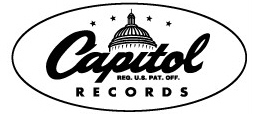 On November 7th, 1967, a tape copy of the mono mix of “The Fool On The Hill” was made, as well as the rest of the “Magical Mystery Tour” songs, in the control room of EMI Studio One by the same team of George Martin, Geoff Emerick and Graham Kirkby. These mixes were duly dispatched to Voyle Gilmore to hand carry them back to Capitol Records for release in the US. On November 7th, 1967, a tape copy of the mono mix of “The Fool On The Hill” was made, as well as the rest of the “Magical Mystery Tour” songs, in the control room of EMI Studio One by the same team of George Martin, Geoff Emerick and Graham Kirkby. These mixes were duly dispatched to Voyle Gilmore to hand carry them back to Capitol Records for release in the US.
 Sometime in 1995, George Martin and Geoff Emerick returned to Abbey Road Studios (EMI Studios) to create two new mixes of “The Fool On The Hill,” a mono mix of Paul’s demo and a stereo mix of the song as it was on September 25th, 1967. Both of these mixes were included on the 1996 released “Anthology 2” compilation album. Sometime in 1995, George Martin and Geoff Emerick returned to Abbey Road Studios (EMI Studios) to create two new mixes of “The Fool On The Hill,” a mono mix of Paul’s demo and a stereo mix of the song as it was on September 25th, 1967. Both of these mixes were included on the 1996 released “Anthology 2” compilation album.
 One additional mix of the song by George Martin and his son Giles Martin occurred sometime between 2004 and 2006. This was done in conjunction with the Cirque du Soleil production “Beatles Love,” which enjoyed tremendous success at The Mirage in Las Vegas. This new mix combines elements of various other Beatles tracks, such as brass and vocals from “Mother Nature’s Son,” piano from “Dear Prudence,” bass from “Because,” drums from “Maxwell’s Silver Hammer” and even tamboura from the George Martin track “Sea Of Holes” from the original “Yellow Submarine” soundtrack album. One additional mix of the song by George Martin and his son Giles Martin occurred sometime between 2004 and 2006. This was done in conjunction with the Cirque du Soleil production “Beatles Love,” which enjoyed tremendous success at The Mirage in Las Vegas. This new mix combines elements of various other Beatles tracks, such as brass and vocals from “Mother Nature’s Son,” piano from “Dear Prudence,” bass from “Because,” drums from “Maxwell’s Silver Hammer” and even tamboura from the George Martin track “Sea Of Holes” from the original “Yellow Submarine” soundtrack album.
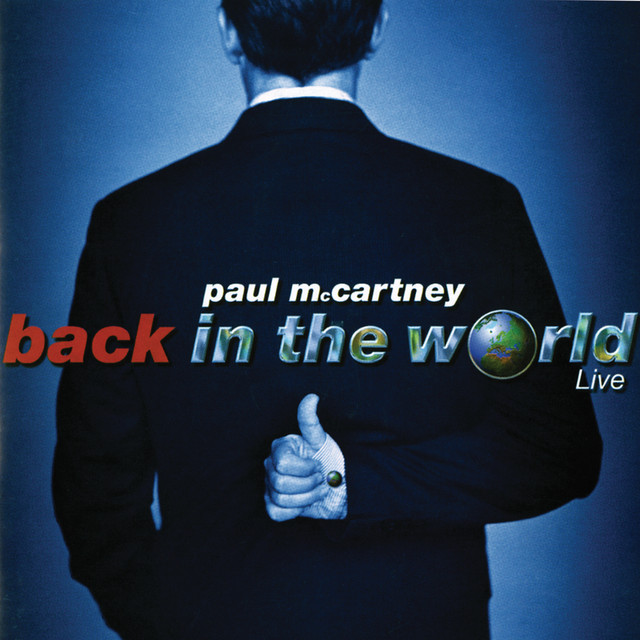 On January 13th, 1990, Paul recorded his first live version of the song as released on his “Tripping The Live Fantastic” LP. Then, sometime between April 1st and May 18th of 2002, he recorded yet another live version of the song as featured on both of his concert albums “Back In The US” and "Back In The World." On January 13th, 1990, Paul recorded his first live version of the song as released on his “Tripping The Live Fantastic” LP. Then, sometime between April 1st and May 18th of 2002, he recorded yet another live version of the song as featured on both of his concert albums “Back In The US” and "Back In The World."
 Giles Martin was given the task in 2023 of creating a "demix remix" of "The Fool On The Hill" for inclusion on the 50th Anniversary edition of the compilation LP "The Beatles / 1967 - 1970" ("The Blue Album"). With Peter Jackson's AI technology at his disposal, Giles Martin was able to utilize this "new machine-learning techology" so that "individual elements that were put to tape and were therefore impossible to separate" could now be "untangled, allowing Giles (Martin) to put the original recordings back together with even greater clarity and impact," as stated by John Harris in the liner notes of the above mentioned album. This is arguably the most vibrant and satisfying stereo version of the song to date, Ringo's kick drum throughout the song being discerned more than ever before. Giles Martin was given the task in 2023 of creating a "demix remix" of "The Fool On The Hill" for inclusion on the 50th Anniversary edition of the compilation LP "The Beatles / 1967 - 1970" ("The Blue Album"). With Peter Jackson's AI technology at his disposal, Giles Martin was able to utilize this "new machine-learning techology" so that "individual elements that were put to tape and were therefore impossible to separate" could now be "untangled, allowing Giles (Martin) to put the original recordings back together with even greater clarity and impact," as stated by John Harris in the liner notes of the above mentioned album. This is arguably the most vibrant and satisfying stereo version of the song to date, Ringo's kick drum throughout the song being discerned more than ever before.
 Sometime in 2025, producer Giles Martin, with engineers Joe Wyatt and Greg McAllister, created a mix of "take five" of the original EMI sessions for "The Fool On The Hill" for inclusion on "Anthology 4," this being released in various editions in 2025 as detailed below. Sometime in 2025, producer Giles Martin, with engineers Joe Wyatt and Greg McAllister, created a mix of "take five" of the original EMI sessions for "The Fool On The Hill" for inclusion on "Anthology 4," this being released in various editions in 2025 as detailed below.
Song Structure and Style
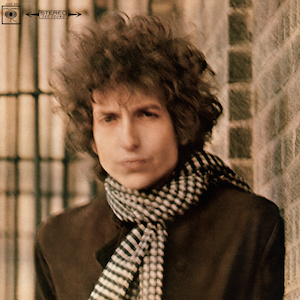 While the listener may be distracted by the gentle elegance of the instrumentation on this song, upon examination we see that the structure actually only consists of repeated verses and refrains in alternation. We end up with a ‘verse/ refrain/ verse/ refrain/ instrumental verse/ refrain/ instrumental verse/ refrain’ (or abababab) with a quick introduction and a faded conclusion which actually is the beginning of yet another instrumental verse. This is not to say that it was a lazily composed piece. On the contrary, it borrows from the common format used in folk music of that time and well before, as witnessed extensively in the works of Pete Seeger and Bob Dylan. While the listener may be distracted by the gentle elegance of the instrumentation on this song, upon examination we see that the structure actually only consists of repeated verses and refrains in alternation. We end up with a ‘verse/ refrain/ verse/ refrain/ instrumental verse/ refrain/ instrumental verse/ refrain’ (or abababab) with a quick introduction and a faded conclusion which actually is the beginning of yet another instrumental verse. This is not to say that it was a lazily composed piece. On the contrary, it borrows from the common format used in folk music of that time and well before, as witnessed extensively in the works of Pete Seeger and Bob Dylan.
Having edited out the first of two measures originally intended for the beginning of the song, the introduction ends up consisting of only one measure of ringing quarter notes in D major. The song continues to alternate between major in the verses to minor in the refrains, this being reflected also in the introduction. But because the first measure was dropped, we don’t experience the minor flavor of the song until the refrain appears for the first time.
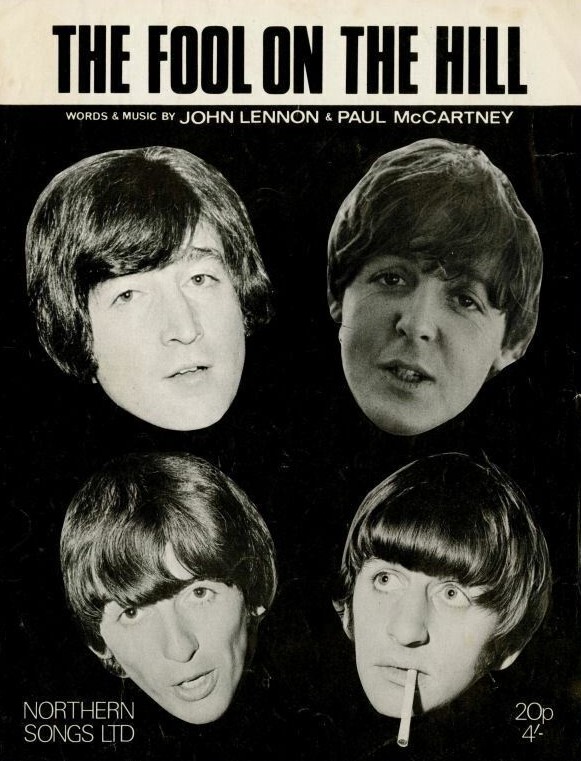 Concerning the major/minor alternation in this song, this texturing has occurred in The Beatles catalog before, such as in “Things We Said Today.” This time around, however, we begin the song in a major key, as if to depict this unnamed man as serene and content despite the disparaging attitude of others who notice him. When the refrain comes around, we then switch to a minor key, denoting his undeniable loneliness as he “sees the sun going down.” The earlier song, as is much more common in alternating minor/major music, begins minor and switches to major later in the song. This is just one more feature that makes “The Fool On The Hill” a unique composition. Concerning the major/minor alternation in this song, this texturing has occurred in The Beatles catalog before, such as in “Things We Said Today.” This time around, however, we begin the song in a major key, as if to depict this unnamed man as serene and content despite the disparaging attitude of others who notice him. When the refrain comes around, we then switch to a minor key, denoting his undeniable loneliness as he “sees the sun going down.” The earlier song, as is much more common in alternating minor/major music, begins minor and switches to major later in the song. This is just one more feature that makes “The Fool On The Hill” a unique composition.
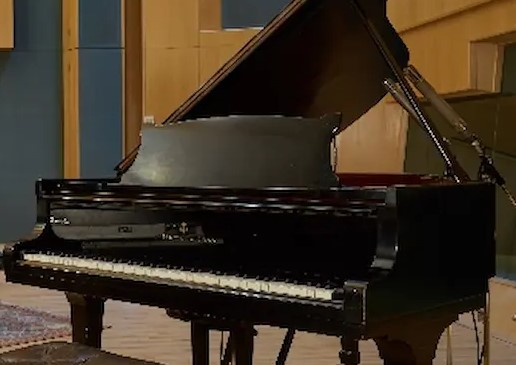 This single-measure introduction consists of Paul’s piano playing quarter-note chords with the only accompaniment being his overdubbed recorder and flutes. This is followed by the seven-measure first verse, which brings in his single-tracked lead vocal and simple flute phrases during the first four measures. Harmonica chording subtly appears in the fifth through seventh measures, this being the only instrumentation used in the song so far. This single-measure introduction consists of Paul’s piano playing quarter-note chords with the only accompaniment being his overdubbed recorder and flutes. This is followed by the seven-measure first verse, which brings in his single-tracked lead vocal and simple flute phrases during the first four measures. Harmonica chording subtly appears in the fifth through seventh measures, this being the only instrumentation used in the song so far.
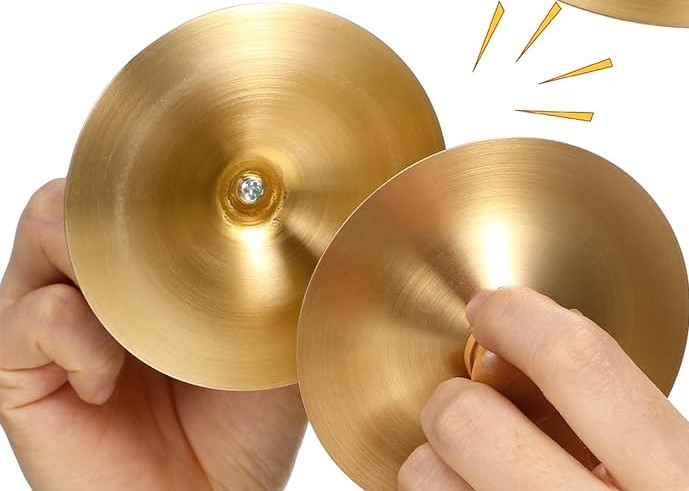 The first five-measure refrain then suddenly appears in mid-phrase as the vocals become double-tracked and the key changes to minor. The title of the song appears for the first time as an introduction to the refrain, as does Ringo with scant maracas keeping the beat and finger cymbals accenting twice per measure. The recorders and flutes play slow passages to accompany Paul’s vocal melody line as the piano's bass notes appears quietly in the background. Ringo breaks his 4/4 pattern on maracas in the fourth measure with a violent shaking crescendo to usher in the switch back to a major key in the final measure. The harmonicas disappear during the refrain until the final measure where they reappear to add an unusual texture to the arrangement. The recorders and flutes play a simple but engaging melody line in this final measure as the acoustic guitar finally appears in the distance. Paul’s piano, of course, continues throughout the refrain functioning as a constant timekeeper for the entire song. The first five-measure refrain then suddenly appears in mid-phrase as the vocals become double-tracked and the key changes to minor. The title of the song appears for the first time as an introduction to the refrain, as does Ringo with scant maracas keeping the beat and finger cymbals accenting twice per measure. The recorders and flutes play slow passages to accompany Paul’s vocal melody line as the piano's bass notes appears quietly in the background. Ringo breaks his 4/4 pattern on maracas in the fourth measure with a violent shaking crescendo to usher in the switch back to a major key in the final measure. The harmonicas disappear during the refrain until the final measure where they reappear to add an unusual texture to the arrangement. The recorders and flutes play a simple but engaging melody line in this final measure as the acoustic guitar finally appears in the distance. Paul’s piano, of course, continues throughout the refrain functioning as a constant timekeeper for the entire song.
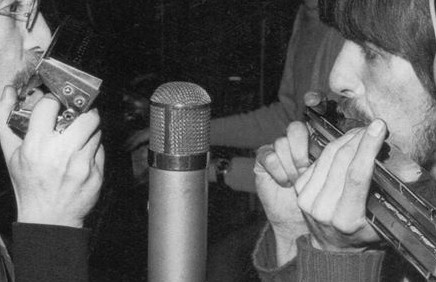 The second verse is also seven measures long and reverts back to single tracked vocals along with the general instrumentation of the first verse but with various differences. Simple acoustic guitar phrases are heard in the second half of the first three measures, while the flutes play melodic lines a little more complex than in the first verse. In measures five through seven, the harmonicas reappear and the flutes harmonize at a higher register. The repeat of the refrain is identical to the first in arrangement and instrumentation except for the more detailed flute arrangement, especially the melodic run in the fifth and final measure. The second verse is also seven measures long and reverts back to single tracked vocals along with the general instrumentation of the first verse but with various differences. Simple acoustic guitar phrases are heard in the second half of the first three measures, while the flutes play melodic lines a little more complex than in the first verse. In measures five through seven, the harmonicas reappear and the flutes harmonize at a higher register. The repeat of the refrain is identical to the first in arrangement and instrumentation except for the more detailed flute arrangement, especially the melodic run in the fifth and final measure.
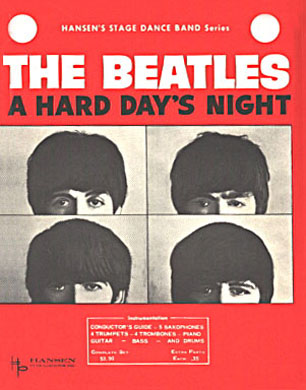 Next comes the first instrumental verse, which is actually half instrumental and half vocal, not unlike what The Beatles have done in the past in “From Me To You” and “A Hard Day’s Night,” among others. Paul’s recorder plays a prominent role here, recreating the sung melody line of the previous verses for the first four measures, the rhythm of these measures being propelled nicely by the piano, light drums and heavy puffs on the harmonicas. The flutes also kick in to accentuate Paul’s melody line with a pretty counter-melody. The rhythmic floor then drops out for measures five through seven as we return to the exact instrumentation of the previous verse, vocals and all. Next comes the first instrumental verse, which is actually half instrumental and half vocal, not unlike what The Beatles have done in the past in “From Me To You” and “A Hard Day’s Night,” among others. Paul’s recorder plays a prominent role here, recreating the sung melody line of the previous verses for the first four measures, the rhythm of these measures being propelled nicely by the piano, light drums and heavy puffs on the harmonicas. The flutes also kick in to accentuate Paul’s melody line with a pretty counter-melody. The rhythmic floor then drops out for measures five through seven as we return to the exact instrumentation of the previous verse, vocals and all.
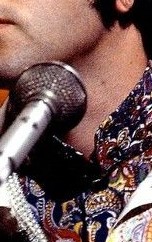 The third refrain then appears, which creates the most ominous feel heard yet in the song with the almost spooky tone of the overdubbed flutes in a sometimes pulsing pattern. This gives way to another optimistic switch to the major key in the fifth measure, as if we’ve just made our way through the dark forest and into a sunny clearing. To celebrate, Paul exuberantly interjects his “Oh, oh, oh…round, round, round…” vocal gymnastics on top of his recorder melody line in the next instrumental verse that follows, this verse mimicking the arrangement of the previous one with the addition of acoustic guitar embellishments. He even ends his recorder part with a pied piper-like finger trill as if he’s bounding through a meadow in springtime! The third refrain then appears, which creates the most ominous feel heard yet in the song with the almost spooky tone of the overdubbed flutes in a sometimes pulsing pattern. This gives way to another optimistic switch to the major key in the fifth measure, as if we’ve just made our way through the dark forest and into a sunny clearing. To celebrate, Paul exuberantly interjects his “Oh, oh, oh…round, round, round…” vocal gymnastics on top of his recorder melody line in the next instrumental verse that follows, this verse mimicking the arrangement of the previous one with the addition of acoustic guitar embellishments. He even ends his recorder part with a pied piper-like finger trill as if he’s bounding through a meadow in springtime!
 The second half of this verse brings his vocals back in but this time sung with an alternate higher-pitched melody line, while the flutes reveal yet another melody line to differentiate it from all of the previous verses. Paul’s words “they don’t like him” usher in the final dark-sounding refrain which shows a somewhat more simplified flute pattern this time, while Paul alters his sung melody line a little as well, this being the only refrain not double-tracked on the recording. Another obvious difference in this refrain is the "seagulls" sound effect heard in the fifth measure which replaces the missing flute pattern of the previous refrains. The second half of this verse brings his vocals back in but this time sung with an alternate higher-pitched melody line, while the flutes reveal yet another melody line to differentiate it from all of the previous verses. Paul’s words “they don’t like him” usher in the final dark-sounding refrain which shows a somewhat more simplified flute pattern this time, while Paul alters his sung melody line a little as well, this being the only refrain not double-tracked on the recording. Another obvious difference in this refrain is the "seagulls" sound effect heard in the fifth measure which replaces the missing flute pattern of the previous refrains.
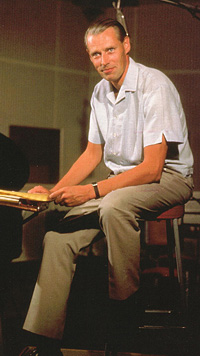 This refrain ends with Paul’s recorders overlapping each other to introduce the song’s conclusion, which is actually the first four measures of yet another instrumental verse that then disappears when faded down. We need to remember that, since the complete take of the song extended to 4:38, this conclusion was actually recorded as yet another full verse that was faded down in order to allow the track to fit radio airplay standards. Thanks go to George Martin, undoubtedly, for reducing the length to a more palatable three minutes, thereby omitting what would have been a little too much redundancy and/or self indulgence. This refrain ends with Paul’s recorders overlapping each other to introduce the song’s conclusion, which is actually the first four measures of yet another instrumental verse that then disappears when faded down. We need to remember that, since the complete take of the song extended to 4:38, this conclusion was actually recorded as yet another full verse that was faded down in order to allow the track to fit radio airplay standards. Thanks go to George Martin, undoubtedly, for reducing the length to a more palatable three minutes, thereby omitting what would have been a little too much redundancy and/or self indulgence.
This conclusion includes some more celebratory “ohhhhh, round, round, round” vocals from Paul. The instrumental arrangement is the same here as in the previous instrumental verses, the acoustic guitars being heard a little more prominently this time around. George Martin even made sure the fade-out lasted long enough to include Paul's fancy finger-work recorder trill, this becoming the song’s final word.
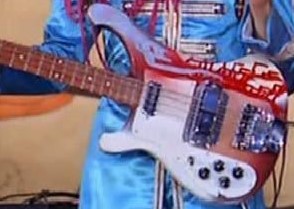 The instrumental arrangement of “The Fool On The Hill,” while including all four Beatles in prominent roles, deviates quite radically from their usual two guitars, bass and drums format, which makes the song stand out very noticeably. Paul’s vocal work, while periodically double-tracked, is performed throughout without any harmony, accentuating the isolated feeling of the subject matter. His piano and recorder playing creates the perfect light and airy atmosphere, and John and George’s dominant harmonica work creates an element of inventiveness within the arrangement. The acoustic guitar work deals only in accents without the cloying strumming of the first takes of the song, which would have muddied the arrangement. Ringo may have been reduced to percussion instruments and light drum work, but they were done masterfully as usual. The instrumental arrangement of “The Fool On The Hill,” while including all four Beatles in prominent roles, deviates quite radically from their usual two guitars, bass and drums format, which makes the song stand out very noticeably. Paul’s vocal work, while periodically double-tracked, is performed throughout without any harmony, accentuating the isolated feeling of the subject matter. His piano and recorder playing creates the perfect light and airy atmosphere, and John and George’s dominant harmonica work creates an element of inventiveness within the arrangement. The acoustic guitar work deals only in accents without the cloying strumming of the first takes of the song, which would have muddied the arrangement. Ringo may have been reduced to percussion instruments and light drum work, but they were done masterfully as usual.
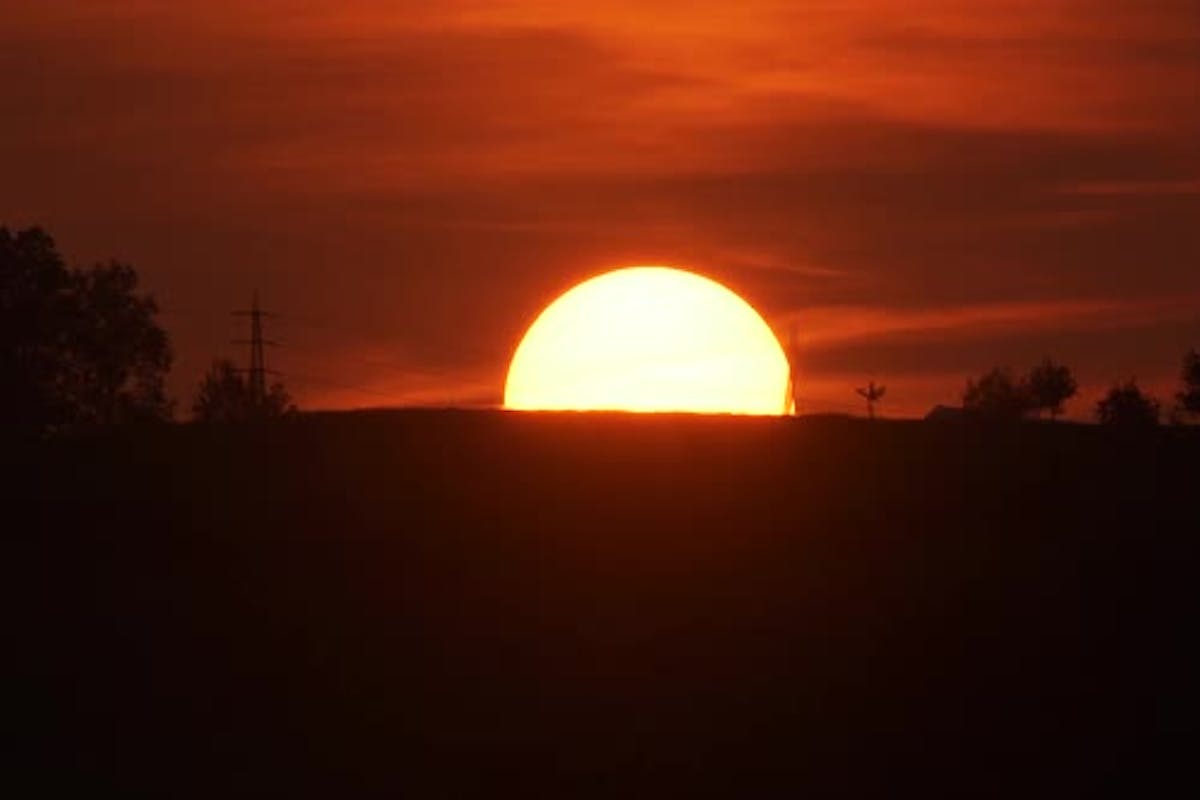 Following the “someone like Maharishi” description Paul gives of this “fool on the hill,” we see some obvious similarities. This guru-like individual sits “perfectly still” “alone on a hill” taking in and fully acknowledging nature around him, such as “the sun going down” and “the world spinning ‘round.” The elevated consciousness he has achieved, him recognizing his oneness with everything around him, gives him great wisdom that can be imparted to anyone with an open mind who approaches him. Following the “someone like Maharishi” description Paul gives of this “fool on the hill,” we see some obvious similarities. This guru-like individual sits “perfectly still” “alone on a hill” taking in and fully acknowledging nature around him, such as “the sun going down” and “the world spinning ‘round.” The elevated consciousness he has achieved, him recognizing his oneness with everything around him, gives him great wisdom that can be imparted to anyone with an open mind who approaches him.
 Unfortunately, “nobody wants to know him,” thinking him to be “just a fool.” And even though his eager explanations of the meaning of life result in him being perceived as “a man with a thousand voices talking perfectly loud,” relatively “nobody ever hears him or the sound he appears to make.” The public at large, engaged in their conventional everyday life, “can tell what he wants to do,” that is, impart knowledge that they are too narrow-minded to consider. Therefore, “nobody ever hears him.” This content sage “never shows his feelings” so as to hide his sadness or insecurities. The final verse, however, reveals his mutual distaste for those who deride him, saying “he knows that they’re the fools.” The sentiments of the song, therefore, appear to insinuate that we need to consider all aspects of people and life before we pass judgment. Unfortunately, “nobody wants to know him,” thinking him to be “just a fool.” And even though his eager explanations of the meaning of life result in him being perceived as “a man with a thousand voices talking perfectly loud,” relatively “nobody ever hears him or the sound he appears to make.” The public at large, engaged in their conventional everyday life, “can tell what he wants to do,” that is, impart knowledge that they are too narrow-minded to consider. Therefore, “nobody ever hears him.” This content sage “never shows his feelings” so as to hide his sadness or insecurities. The final verse, however, reveals his mutual distaste for those who deride him, saying “he knows that they’re the fools.” The sentiments of the song, therefore, appear to insinuate that we need to consider all aspects of people and life before we pass judgment.
American Releases
November 27th, 1967, was the date the album “Magical Mystery Tour” was released in the US. “The Fool On The Hill,” being the second song on the album following the introductory-like theme song, was positioned in the track list to get good attention, which it did. Six million copies later, the song still stands out as a definite jewel on the album. The vinyl edition of this album continued to be reissued in the US throughout the years, while it was first released on compact disc on September 21st, 1987 and then in a newly remastered condition on September 9th, 2009.
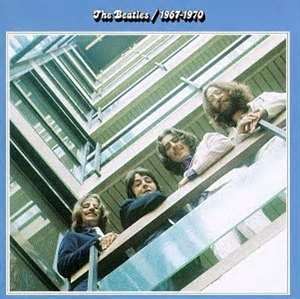 It stood out enough to earn a spot on the April 2nd, 1973, released compilation set “The Beatles/1967-1970” (aka “The Blue Album”). This was first released as a double-compact disc on September 20th, 1993, "The Fool On The Hill" also appearing on the composite "Red Album / Blue Album" promotional sampler that was released simultaneously. The "Blue Album" then came out as a remastered set on August 10th, 2010. It stood out enough to earn a spot on the April 2nd, 1973, released compilation set “The Beatles/1967-1970” (aka “The Blue Album”). This was first released as a double-compact disc on September 20th, 1993, "The Fool On The Hill" also appearing on the composite "Red Album / Blue Album" promotional sampler that was released simultaneously. The "Blue Album" then came out as a remastered set on August 10th, 2010.
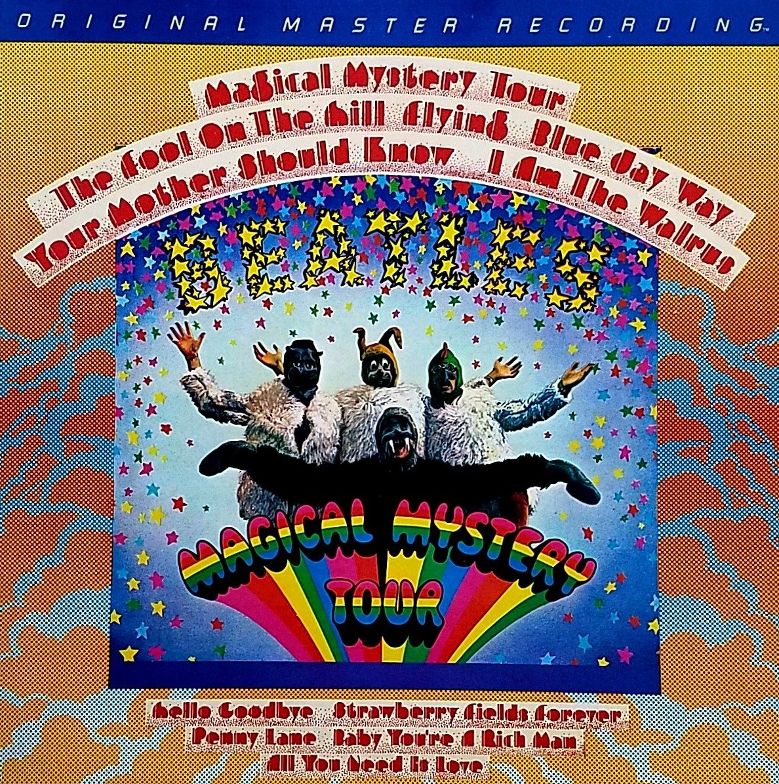 An interesting US vinyl edition of the “Magical Mystery Tour” album was released on February 1st, 1981. This was manufactured by Mobile Fidelity Sound Lab in Chatsworth, California and was part of their "Original Master Recording" series, which prepared its albums utilizing half-speed mastering technology from the original master tapes. In this case, however, they leased the master tape from EMI in the UK, not realizing that this was a second generation master tape originally supplied by Capitol Records in America. While this release sounded superior to conventional vinyl versions, it still contained the duophonic (fake stereo) mixes of “Penny Lane,” “Baby, You're A Rich Man” and “All You Need Is Love.” Also, as was the case with all of the vinyl editions of the album by this time, the original multi-page booklet was omitted from this new vinyl release. Nevertheless, this edition of the album was only available for a short time and is quite collectible today. An interesting US vinyl edition of the “Magical Mystery Tour” album was released on February 1st, 1981. This was manufactured by Mobile Fidelity Sound Lab in Chatsworth, California and was part of their "Original Master Recording" series, which prepared its albums utilizing half-speed mastering technology from the original master tapes. In this case, however, they leased the master tape from EMI in the UK, not realizing that this was a second generation master tape originally supplied by Capitol Records in America. While this release sounded superior to conventional vinyl versions, it still contained the duophonic (fake stereo) mixes of “Penny Lane,” “Baby, You're A Rich Man” and “All You Need Is Love.” Also, as was the case with all of the vinyl editions of the album by this time, the original multi-page booklet was omitted from this new vinyl release. Nevertheless, this edition of the album was only available for a short time and is quite collectible today.
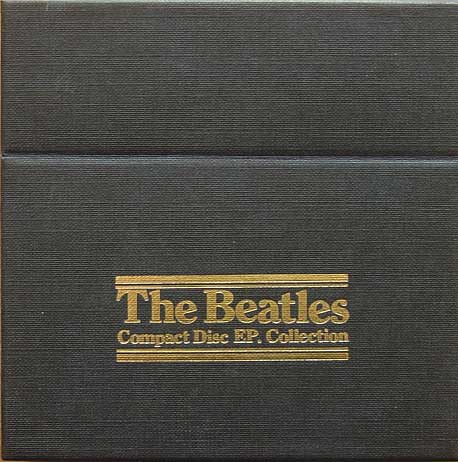 On June 30th, 1992, a new CD box set was released in the US entitled “Compact Disc EP Collection.” Their entire British mono EP collection was included in this set, the double-EP “Magical Mystery Tour” being the final EP installment in their home country, here presented in both mono and stereo. On June 30th, 1992, a new CD box set was released in the US entitled “Compact Disc EP Collection.” Their entire British mono EP collection was included in this set, the double-EP “Magical Mystery Tour” being the final EP installment in their home country, here presented in both mono and stereo.
“The Fool On The Hill” also made it onto a Capitol single for a limited edition release. On January 24th, 1996, Capitol released its Cema series “For Jukebox Only” single of the song “Magical Mystery Tour” with “The Fool On The Hill” as the b-side on orange vinyl, the relatively rare mono mix being used here.
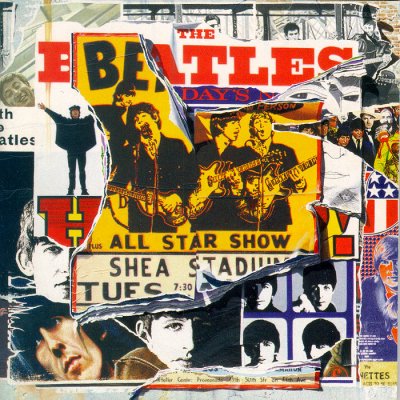 A little later that year, on March 18th, 1996, the album “Anthology 2” was released which featured two rare versions of “The Fool On The Hill.” The first was Paul’s piano demo of the song, which had been available on bootleg releases for many years. The second version was not, however, this being the early September 25th, 1967 version which was quite different from the released record. It was an interesting look into how the song evolved in the studio. A little later that year, on March 18th, 1996, the album “Anthology 2” was released which featured two rare versions of “The Fool On The Hill.” The first was Paul’s piano demo of the song, which had been available on bootleg releases for many years. The second version was not, however, this being the early September 25th, 1967 version which was quite different from the released record. It was an interesting look into how the song evolved in the studio.
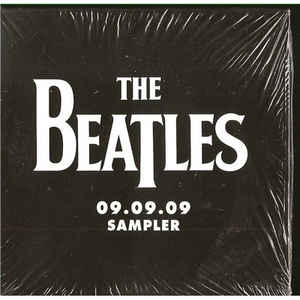 On September 9th, 2009, the CD box set “The Beatles In Mono” was released which contained the entire mono Beatles catalog in a newly remastered condition, “The Fool On The Hill” being among the collection. Also released on September 9th, 2009, in promotion of the remastered Beatles catalog, the "09.09.09 Sampler" was distributed to retailers and radio programmers, "The Fool On The Hill" being featured therein. The vinyl edition of the box set was first released on September 9th, 2014. On September 9th, 2009, the CD box set “The Beatles In Mono” was released which contained the entire mono Beatles catalog in a newly remastered condition, “The Fool On The Hill” being among the collection. Also released on September 9th, 2009, in promotion of the remastered Beatles catalog, the "09.09.09 Sampler" was distributed to retailers and radio programmers, "The Fool On The Hill" being featured therein. The vinyl edition of the box set was first released on September 9th, 2014.
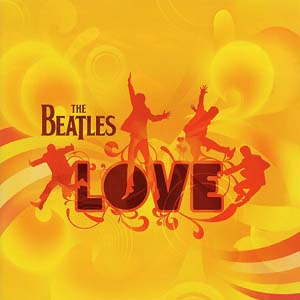 On February 8th, 2011, the newly concocted mix of “The Fool On The Hill,” which was created by George and Giles Martin sometime between 2004 and 2006, was finally released to the general public. It was not included on the “Love” album, but was made available on this date only as a digital download from iTunes. On February 8th, 2011, the newly concocted mix of “The Fool On The Hill,” which was created by George and Giles Martin sometime between 2004 and 2006, was finally released to the general public. It was not included on the “Love” album, but was made available on this date only as a digital download from iTunes.
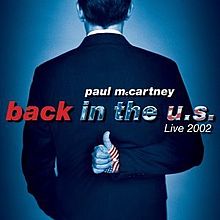 Interestingly, on October 8th, 2012, a restored version of the film “Magical Mystery Tour” was released on DVD and Blu-ray, available also as a deluxe edition “Collectors Box” which included an actual vinyl EP set as originally released in Britain but in remastered mono. With “The Fool On The Hill” as part of this set, this was the first time the vinyl EP was released in America. Interestingly, on October 8th, 2012, a restored version of the film “Magical Mystery Tour” was released on DVD and Blu-ray, available also as a deluxe edition “Collectors Box” which included an actual vinyl EP set as originally released in Britain but in remastered mono. With “The Fool On The Hill” as part of this set, this was the first time the vinyl EP was released in America.
Paul McCartney’s live versions of the song were included on two US releases, the first being the October 29th, 1990 released “Tripping The Live Fantastic,” the second being the November 11th, 2002 released "Back In The US."
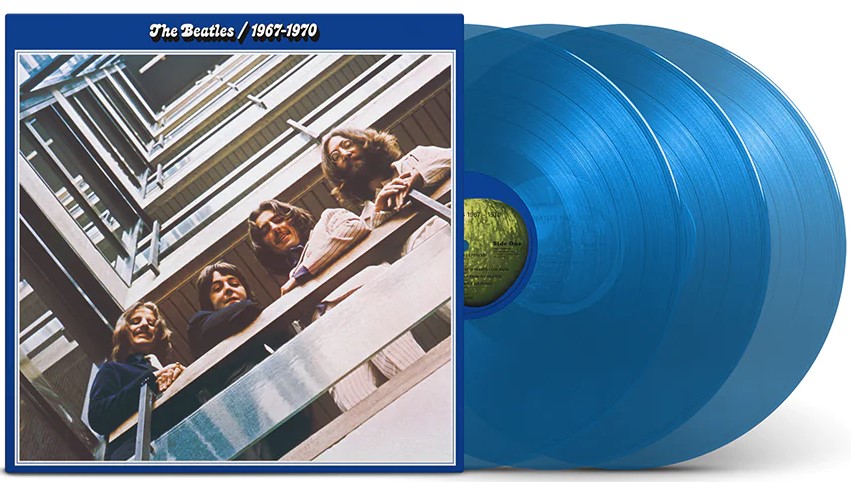 A 50th Anniversay edition of the compilation album "The Beatles / 1967 - 1970" (aka "The Blue Album") was released on November 10th, 2023. This expanded release included 12 additional songs for a total of 38 tracks, including the new mix of "The Fool On The Hill" detailed above, and was made available as a double CD and as a triple vinyl release on both black and blue vinyl. A 50th Anniversay edition of the compilation album "The Beatles / 1967 - 1970" (aka "The Blue Album") was released on November 10th, 2023. This expanded release included 12 additional songs for a total of 38 tracks, including the new mix of "The Fool On The Hill" detailed above, and was made available as a double CD and as a triple vinyl release on both black and blue vinyl.
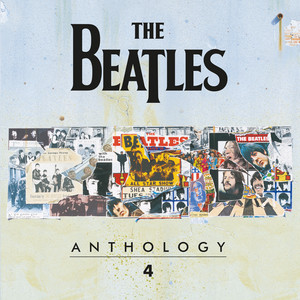 On November 21st, 2025, "Anthology 4" was released on both CD and vinyl, this album also being made available within the "Anthology Collection" box set on CD and on vinyl. "Take five" of "The Fool On The Hill" as recorded at EMI Studio Two on September 26th, 1967, as detailed above, was included on this release. On November 21st, 2025, "Anthology 4" was released on both CD and vinyl, this album also being made available within the "Anthology Collection" box set on CD and on vinyl. "Take five" of "The Fool On The Hill" as recorded at EMI Studio Two on September 26th, 1967, as detailed above, was included on this release.
Live Performances
While The Beatles never performed it live, Paul began including “The Fool On The Hill” quite early in his live career, it being one of seven Beatles songs he began playing on stage during the Wings years. His final UK Wings tour of 1979, which spanned from November 23rd (Liverpool) to December 29th (London) included the song.
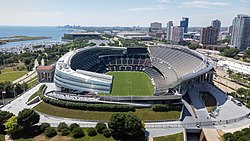 Paul then included “The Fool On The Hill” in his extensive “World Tour” of 1989/1990, having incorporated segments of Martin Luther King’s “I Have A Dream” speech while the song was being performed. This tour ran from September 26th, 1989 (Drammen, Norway) to July 29th, 1990 (at Soldier Field in Chicago, Illinois). He then included the song in his 2002 “Driving USA” Tour, running from April 1st (Oakland, California) to May 18th (Sunrise, Florida). Then his “Back In The US” Tour featured the song as well, this tour spanning from September 21st (Milwaukee, Wisconsin) to October 29th (Phoenix, Arizona). His brief 2002 “Driving Mexico” Tour featured the song, running from November 2nd through 5th in Mexico City, as did his 2002 “Driving Japan” Tour, running from November 11th (Tokyo) to November 18th (Osaka). His 2003 “Back In The World” Tour also included the song, this tour spanning from March 25th (Paris) to June 1st (Liverpool). He also included the song in the first portion of his "One On One" tour, which ran from April 13th, 2016 (Fresno, California) to July 23rd, 2017 (Omaha, Nebraska). Paul then included “The Fool On The Hill” in his extensive “World Tour” of 1989/1990, having incorporated segments of Martin Luther King’s “I Have A Dream” speech while the song was being performed. This tour ran from September 26th, 1989 (Drammen, Norway) to July 29th, 1990 (at Soldier Field in Chicago, Illinois). He then included the song in his 2002 “Driving USA” Tour, running from April 1st (Oakland, California) to May 18th (Sunrise, Florida). Then his “Back In The US” Tour featured the song as well, this tour spanning from September 21st (Milwaukee, Wisconsin) to October 29th (Phoenix, Arizona). His brief 2002 “Driving Mexico” Tour featured the song, running from November 2nd through 5th in Mexico City, as did his 2002 “Driving Japan” Tour, running from November 11th (Tokyo) to November 18th (Osaka). His 2003 “Back In The World” Tour also included the song, this tour spanning from March 25th (Paris) to June 1st (Liverpool). He also included the song in the first portion of his "One On One" tour, which ran from April 13th, 2016 (Fresno, California) to July 23rd, 2017 (Omaha, Nebraska).
Conclusion
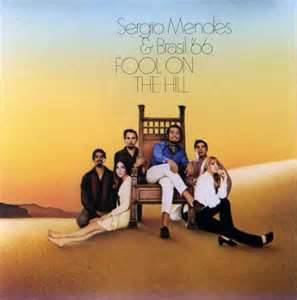 Coming off of the startling complexity of the arrangement that is heard on the “Sgt. Pepper” album, much attention was heaped upon “The Fool On The Hill” shortly after its release due to its distinctive instrumentation and its clever production. Cover versions of this song quickly abounded, the most noteworthy being by Sergio Mendes and Brazil ’66, which peaked at #6 on the US Billboard Hot 100. Coming off of the startling complexity of the arrangement that is heard on the “Sgt. Pepper” album, much attention was heaped upon “The Fool On The Hill” shortly after its release due to its distinctive instrumentation and its clever production. Cover versions of this song quickly abounded, the most noteworthy being by Sergio Mendes and Brazil ’66, which peaked at #6 on the US Billboard Hot 100.
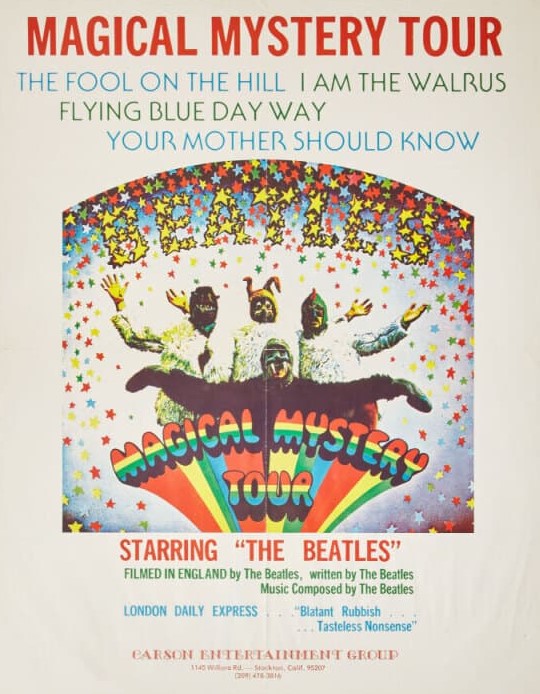 The Beatles' version, however, doesn’t get the airplay it once did, the result being that “The Fool On The Hill” is often times overlooked and equated with the ill-fated British TV film that featured the song. With the later popularity of the movie, due primarily to its 2012 re-release on DVD, many are rediscovering the beauty and elegance contained in the song as well as the composition as a whole. The film’s sequence for "The Fool On The Hill," as was filmed by cameraman Aubrey Dewar at various scenic locations in Nice, France on October 31st, 1967, is a visual highlight of the entire production. That being said, new audiences are currently either being introduced or reacquainted with a true gem in the Paul McCartney collection. The Beatles' version, however, doesn’t get the airplay it once did, the result being that “The Fool On The Hill” is often times overlooked and equated with the ill-fated British TV film that featured the song. With the later popularity of the movie, due primarily to its 2012 re-release on DVD, many are rediscovering the beauty and elegance contained in the song as well as the composition as a whole. The film’s sequence for "The Fool On The Hill," as was filmed by cameraman Aubrey Dewar at various scenic locations in Nice, France on October 31st, 1967, is a visual highlight of the entire production. That being said, new audiences are currently either being introduced or reacquainted with a true gem in the Paul McCartney collection.
Song Summary
“The Fool On The Hill”
Written by: John Lennon / Paul McCartney
-
Song Written: March - September, 1967
-
Song Recorded: September 25, 26, 27, October 20, 1967
-
First US Release Date: November 27, 1967
-
-
US Single Release: Capitol Cema #S7-18890
-
Highest Chart Position: n/a
-
British Album Release: Apple #PSCP 718 “The Beatles/1967-1970”
-
Length: 3:00
-
Key: D major
-
Producer: George Martin
-
Engineers: Ken Scott, Richard Lush, Phil McDonald
Instrumentation (most likely):
-
Paul McCartney - Lead Vocals, Piano (Hamburg Steinway Baby Grand), Piano (1964 Challen "Jangle Box" upright 861834), Recorders, Rhythm Guitar? (1964 Epiphone Texan FT-79?)
-
John Lennon - Celeste (Scheidmayer), Harmonica (Hohner chromatic)
-
George Harrison - Acoustic Guitars (1962 Gibson J-160E), Harmonica (Hohner chromatic)
- Ringo Starr - Drums (1964 Ludwig Super Classic Black Oyster Pearl), maracas, finger cymbals
- Ray Thomas - Harmonica (Hohner chromatic)
- Mike Pinder - Harmonica (Hohner chromatic)
-
Christopher Taylor - flute
-
Richard Taylor - flute
-
Jack Ellory - flute
Written and compiled by David Rybaczewski
|
IF YOU WOULD LIKE TO MAKE A DONATION TO KEEP THIS WEBSITE UP AND RUNNING, PLEASE CLICK BELOW!
|